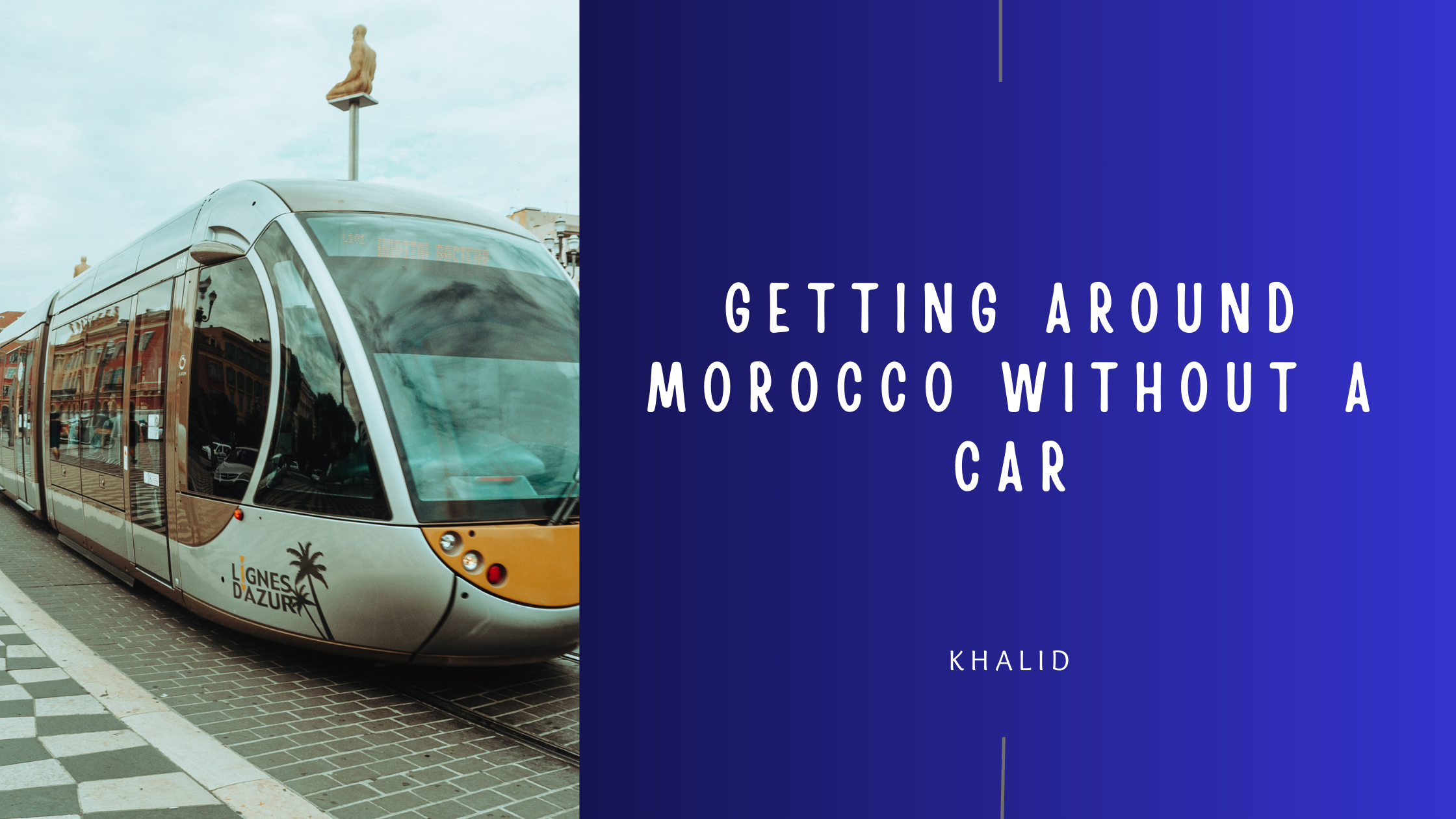Explore the efficient ways of getting around Morocco without a car. Our comprehensive guide covers Morocco’s extensive transportation network, offering insights on buses, trains, taxis, and more. Discover the ease of navigating this vibrant country while experiencing its rich culture and scenic landscapes, all without the need for personal vehicle transport. Morocco’s diverse and efficient public transportation system is an excellent way for travelers to explore the country’s rich landscapes and cultural heritage. From modern trains to extensive bus networks and city trams, understanding the various options can significantly enhance your travel experience in Morocco.
getting around Morocco without a car
Trains: Comfort and Convenience
The Moroccan train network, operated by the National Office of Railways (ONCF), is one of the most developed in Africa. It offers a comfortable and reliable way to travel between major cities.
Key Routes
- High-Speed Rail: The Al Boraq high-speed train connects Tangier with Casablanca via Rabat and Kenitra, significantly reducing travel time.
- Main Lines: Regular trains run between key cities like Casablanca, Marrakech, Fes, and Tangier. Scenic routes, like the one from Casablanca to Marrakech, offer breathtaking views of the Moroccan landscape.
Tips for Train Travel
- Booking: Tickets can be purchased at train stations, online, or through the ONCF mobile app. First-class tickets offer more space and comfort, and it’s advisable to book in advance, especially during peak travel times.
- Facilities: Trains are generally equipped with air conditioning and restrooms. Some long-distance trains also have a dining car.
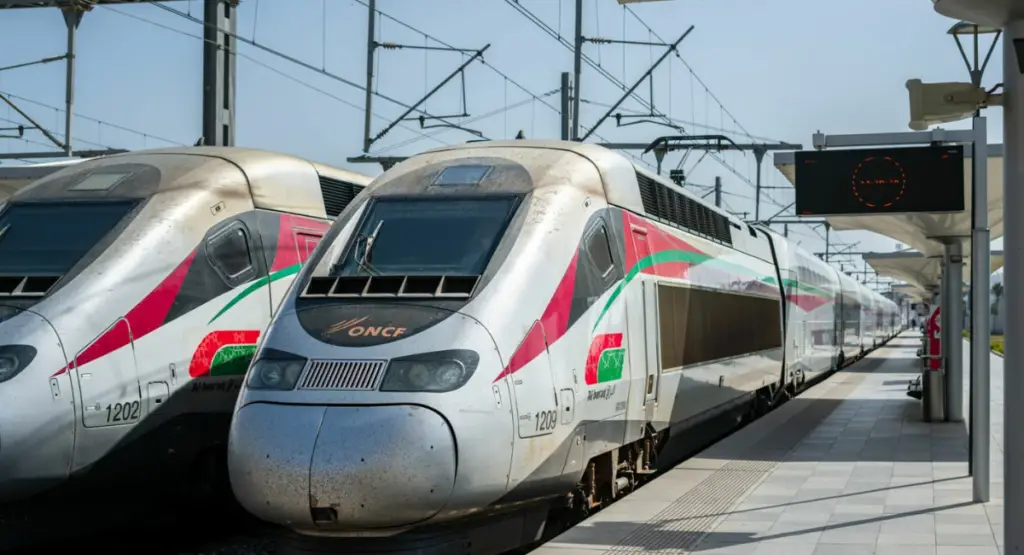
Buses: Extensive Coverage
Buses in Morocco are a popular and economical way to travel, especially to areas not serviced by trains. Numerous private companies operate extensive bus networks.
Major Bus Companies
- CTM and Supratours: These are the most well-known and reliable bus companies, offering extensive routes, comfortable buses, and online booking options.
- Local Companies: Various regional companies provide services to smaller towns and rural areas. These buses might be less comfortable but are often the only way to reach certain destinations.
Tips for Bus Travel
- Comfort and Safety: Opt for first-class or deluxe buses where possible, as they offer more comfort and safety.
- Timeliness: While buses generally adhere to schedules, delays can happen, especially on longer routes.
- Stations and Stops: Major cities have central bus stations, but in smaller towns, buses may stop at designated points.
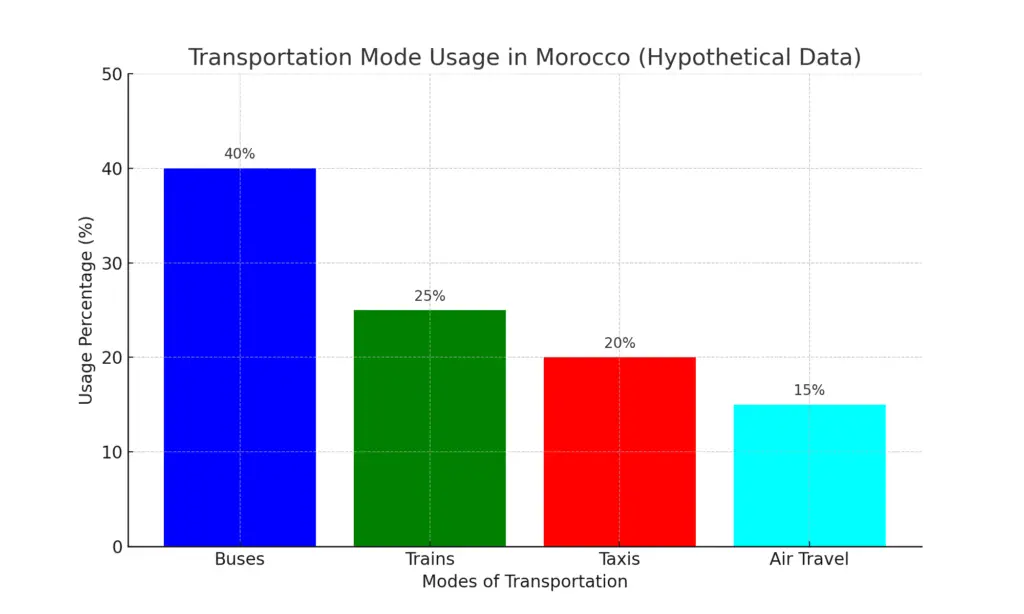
Taxis: Flexible and Direct
Taxis in Morocco offer a flexible way to travel, especially for short distances within cities or for trips not covered by buses or trains.
Types of Taxis
- Petit Taxis: These small taxis operate within city limits and are ideal for short trips. They are metered in larger cities, but fares may need to be negotiated in smaller towns.
- Grand Taxis: Larger than petit taxis, these are used for longer distances and can be shared or hired privately. Fares should be negotiated before departure.
Tips for Taxi Travel
- Negotiate Fares: Always agree on a fare before starting your trip, especially in grand taxis.
- Safety: Ensure the taxi has a functional meter if it operates in a city where this is the norm.

Trams: Urban Navigation
Trams are a modern and efficient way to navigate through some Moroccan cities.
Key Cities with Trams
- Casablanca: The tram system in Casablanca spans several lines and connects major city areas, including business districts and tourist attractions.
- Rabat-Salé: This tram system connects the cities of Rabat and Salé and is a convenient way to explore the capital and its neighboring cities.
Tips for Tram Travel
- Tickets: Purchase tickets at tram stations. Be aware that tickets must be validated upon boarding.
- Frequency and Hours: Trams run at regular intervals, with reduced services in the evenings and on Sundays.
Car Rentals: Exploring at Your Own Pace
For those who prefer a more independent travel experience, renting a car in Morocco offers the flexibility to explore off-the-beaten-path destinations and travel at your own pace.
Renting a Car
- Rental Companies: International rental companies like Avis, Hertz, and Europcar, as well as local firms, are available in major cities and airports.
- Requirements: Typically, you need to be at least 21 years old with a valid driver’s license. An International Driving Permit (IDP) is recommended in addition to your national driver’s license.
- Road Conditions: Highways and main roads are generally in good condition. However, rural and mountainous areas may have challenging road conditions, and a 4×4 vehicle might be necessary for such terrains.
Tips for Driving in Morocco
- Navigation: While major routes are well-signed, a GPS or a good map is invaluable, especially in rural areas.
- Traffic Laws: Adhere to local driving laws and speed limits. Be aware of pedestrians and animals, especially in rural areas.
- Parking: In cities, finding parking can be challenging. Use guarded parking lots where available for security and convenience.
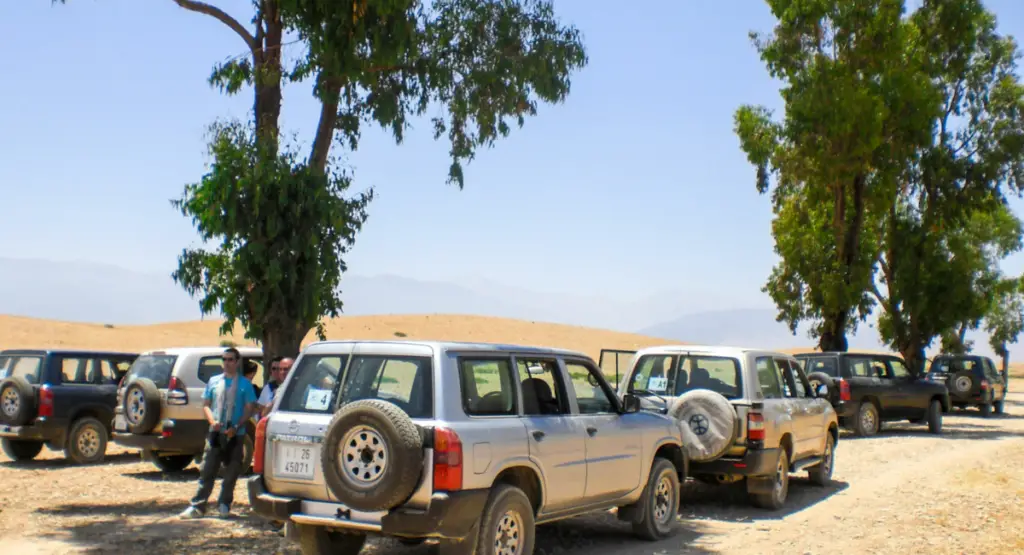
Bicycles and Motorbikes: For the Adventurous
Bicycles and motorbikes can be an adventurous way to explore Morocco’s diverse landscapes. Several rental agencies offer bicycles and motorbikes, particularly in tourist-friendly cities like Marrakech and Agadir.
Considerations for Cycling and Motorbiking
- Terrain: Be prepared for varied terrain, from flat coastal roads to challenging mountain paths.
- Safety Equipment: Please make sure you have the necessary safety gear, also helmets.
- Traffic: Be cautious of traffic, particularly in busy cities and on major roads.
Ferries: Exploring Coastal and Port Cities
Ferries in Morocco are a unique way to travel, especially for trips to coastal and port cities or nearby Spain.
Major Ferry Routes
- Tangier to Tarifa: One of the most popular routes, connecting Morocco with southern Spain.
- Al Hoceima and Nador to Spain: These routes offer another option for traveling to and from Europe.
Tips for Ferry Travel
- Booking: Book tickets in advance, especially during peak tourist seasons.
- Travel Time: Check the duration and frequency of ferry services to plan your trip effectively.

Air Travel: Quick Transfers Between Cities
For longer distances or to save time, domestic flights can be a convenient option. Morocco’s national airline, Royal Air Maroc, and other carriers offer flights between major cities.
Key Air Routes
- Casablanca to Marrakech and Fes: These are among the most popular air routes, connecting major tourist destinations.
- Flights to the Sahara: For those looking to visit the desert regions, flights are available to cities like Ouarzazate and Errachidia.
Tips for Air Travel
- Check-In and Security: Allow ample time for check-in and security, especially at larger airports.
- Luggage Restrictions: Be aware of luggage restrictions and additional fees for domestic flights.
Accessibility and Special Needs
For travelers with special needs, it’s important to note that while Morocco is progressively improving in terms of accessibility, some areas, especially older medinas and rural locations, may present challenges such as uneven surfaces and limited wheelchair access.
Tips for Accessible Travel
- Accommodation: Choose hotels that specifically mention accessibility features.
- Transport: Inquire with transportation companies about accessible options. Larger bus companies and train services are more likely to have facilities to accommodate special needs.
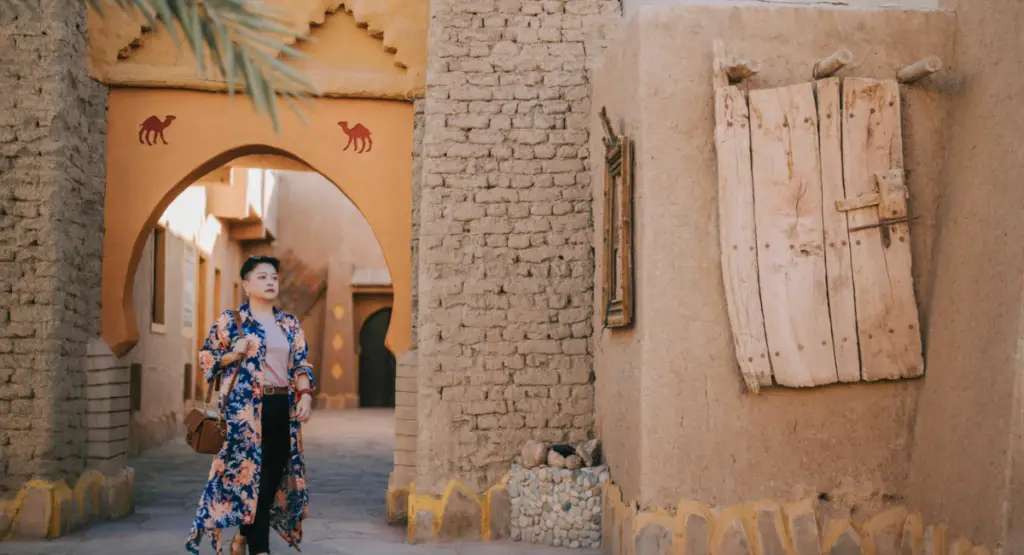
Etiquette and Cultural Considerations in Public Transport
Understanding and respecting local customs and etiquette can enhance your travel experience and interactions with locals.
Cultural Tips
- Dress Code: Dress modestly on public transport, especially in rural areas.
- Language: Learning a few basic phrases in Arabic or French can be helpful and is appreciated by locals.
- Tipping: Small tips for services, like help with luggage, are customary and appreciated.
Safety and Security on Public Transport
While Morocco is generally safe for travelers, it’s prudent to take standard safety precautions when using public transportation.
Safety Tips
- Mind Your Belongings: Keep an eye on your luggage and personal belongings, especially in crowded areas.
- Travel Insurance: Ensure you have adequate travel insurance that covers transportation-related incidents.
- Emergency Numbers: Keep a list of emergency contacts, including local police and your country’s embassy or consulate.
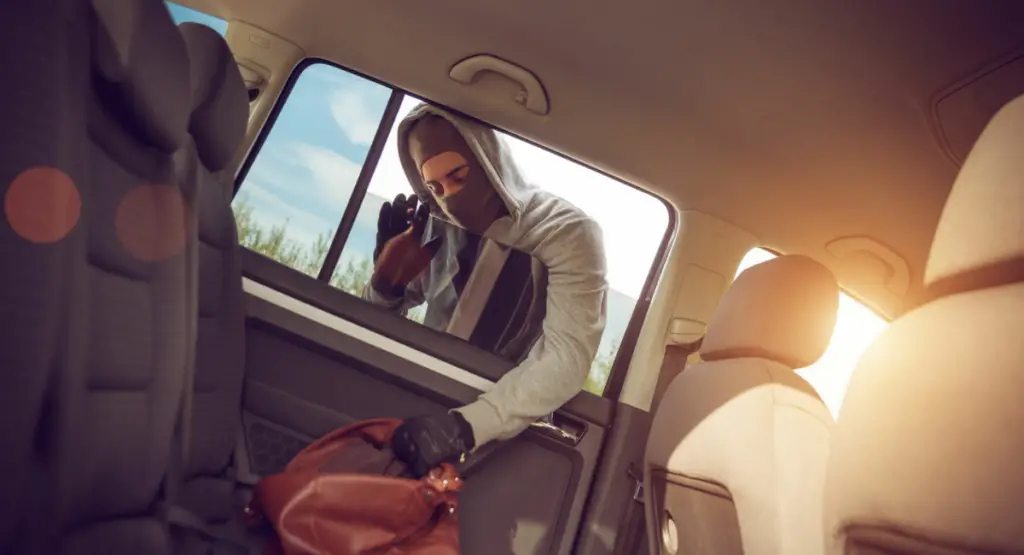
Integrating into Local Life
Using public transportation is not just a means of getting around; it’s an opportunity to immerse yourself in Moroccan life and culture.
Engaging with Locals
- Conversations: Moroccans are generally friendly and open to conversation. Engaging with fellow passengers can provide valuable insights into local life and culture.
- Observation: Pay attention to local customs and behaviors on public transport, which can be a learning experience in itself.
Seasonal Considerations in Transport
Morocco’s climate varies greatly by region and season, which can impact transportation.
Traveling During Different Seasons
- Summer: In the hot summer months, air-conditioned transport options are preferable.
- Winter: In the Atlas Mountains and northern regions, winter weather can affect road conditions. Check weather forecasts and road conditions if traveling in these areas during winter.
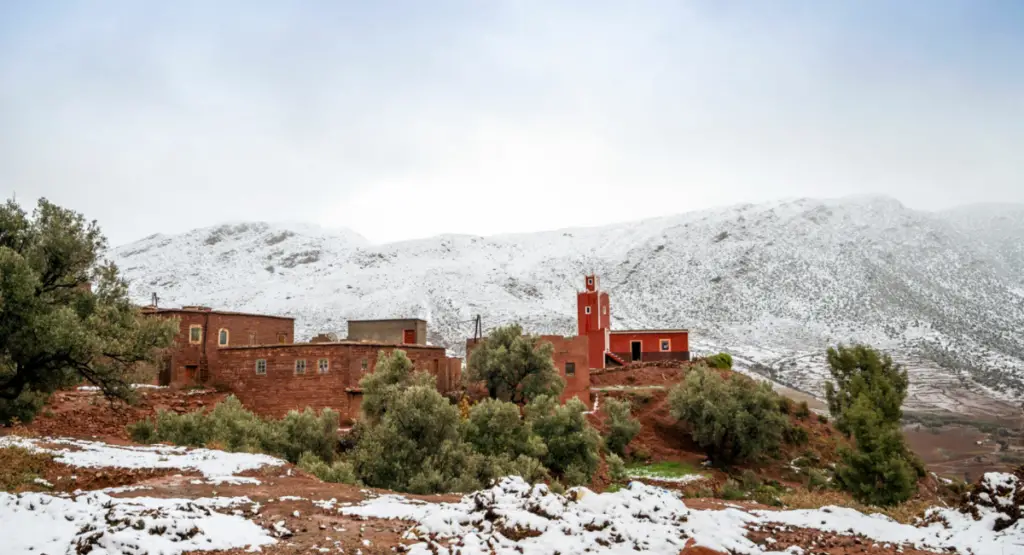
Combining Different Modes of Transport
For a comprehensive exploration of Morocco, consider combining different modes of transport. Everything offers a different style of the country.
Strategic Planning
- Mix and Match: Combine trains for long distances, buses for regional travel, and taxis for local exploration.
- Scenic Routes: Some routes, like train journeys through the Atlas Mountains or coastal drives, are particularly scenic and worth experiencing.
Understanding Fares and Tickets
Navigating the fare systems and ticket purchases is an essential part of using public transport in Morocco.
Fare Systems
- Fixed vs. Negotiable: Train and bus fares are usually fixed, but taxi and sometimes bus fares can be negotiable.
- Ticket Purchase: Purchase tickets at stations, online, or from the driver in some cases. Always have some cash as not all services accept cards.
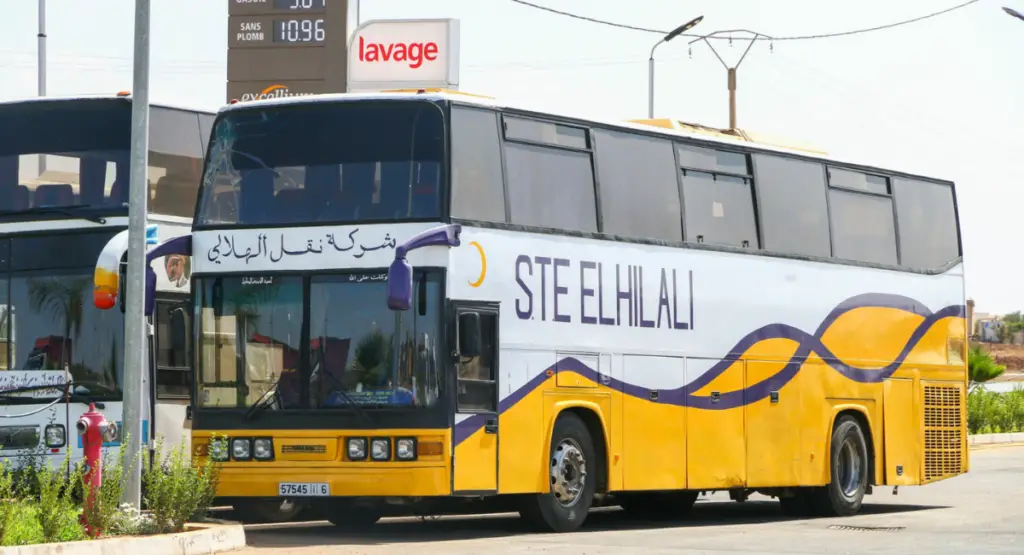
Respect for the Environment
As a traveler, consider your environmental footprint when choosing transportation options.
Eco-friendly Travel
- Public Transport Over Cars: Opt for trains and buses over renting a car to reduce carbon emissions.
- Walking and Cycling: In cities and towns, explore areas on foot or rent a bicycle for short distances.
Language Barrier in Navigation
Language barriers can pose a challenge, especially in less touristy areas.
Overcoming Language Barriers
- Translation Apps: Use translation apps to aid in communication.
- Gestures and Signs: Basic gestures and pointing to maps can be effective in overcoming language barriers.
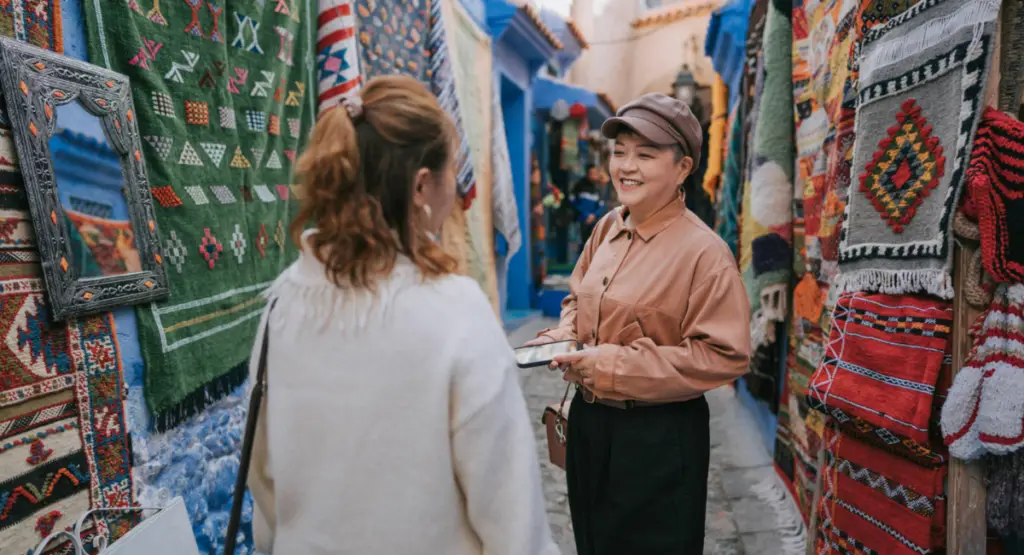
Conclusion
Navigating Morocco by public transportation is not only economical but also an opportunity to experience the country like a local. Each mode of transport offers a unique perspective of Morocco’s diverse geography and culture. By planning and being mindful of local practices, you can journey through Morocco with ease and create unforgettable travel memories.

